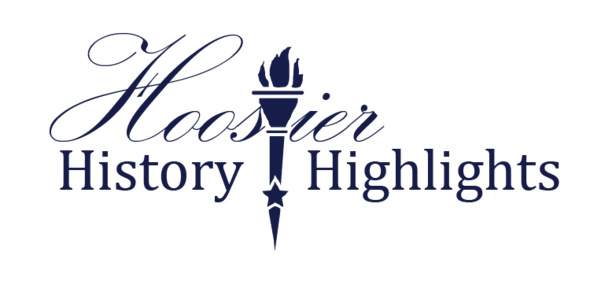This week in Indiana’s history …
 1816 – The first Indiana State Constitution was adopted by the legislature in the state capital of Corydon. The 43 delegates had met for nearly three weeks to create the document which was an integral step to statehood. Among other provisions, the constitution prohibited slavery and recommended a public school system.
1816 – The first Indiana State Constitution was adopted by the legislature in the state capital of Corydon. The 43 delegates had met for nearly three weeks to create the document which was an integral step to statehood. Among other provisions, the constitution prohibited slavery and recommended a public school system.
1863 – The Civil War Battle at Gettysburg ended with a Union victory. Approximately 2,200 Indiana men were engaged from the 3rd Cavalry and 7th, 14th, 19th, 20th, and 27th Infantry Regiments. The 19th was part of the famous “Iron Brigade.” Over one-quarter of the Hoosier soldiers at Gettysburg were killed or wounded.
1886 – The Western Association of Writers met at Plymouth Church in Indianapolis. Many Indiana authors were in attendance, including Maurice Thompson, who was elected the group’s first president. Over the years, the organization included James Whitcomb Riley, Sarah Bolton, Meredith Nicholson, Booth Tarkington, Mary H. Catherwood and others who were part of the “Golden Age of Indiana Literature.”
1923 – Famed orator William Jennings Bryan came to the Gennett Record Company in Richmond. He recorded excerpts of his famous “Cross of Gold” speech. The Richmond studio is a legendary part of jazz history.
1940 – The popular Glenn Miller Band played one-night only at the Ideal Beach Ballroom at Lake Shafer in Monticello. The band, rated number-one by Billboard Magazine, dominated record sales and plays on radio and jukeboxes. Their recording of “In the Mood” was at the top of the hit parade for 1940.
1943 – Zilthia Mae Jimison was born in Indianapolis. She attended law school and became the first African American woman to serve on the Marion County Superior Court. She was on the Indianapolis city council and, in 1995, was a candidate for mayor. She established the drug treatment court and was active in many civic organizations.
